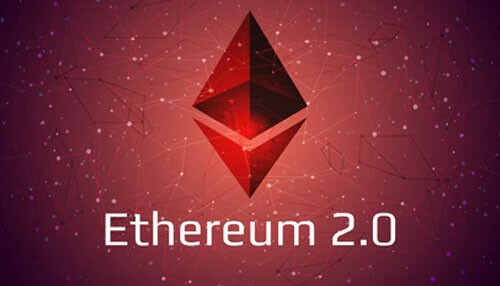After being one of the most anticipated event in the blockchain industry this year, Ethereum finally transitioned from the proof-of-work consensus to the Proof-of-stake consensus. The switch, which was completed on September 15, and allowed people to Stake Ethereum, was met with jubilations in the crypto space. Before we go into details of that, what is Ethereum staking 2.0, and how does it affect the Ethereum blockchain?
What Is ETH Staking?
Ethereum staking is the way of validating transaction and maintaining the integrity of Ethereum, now that it has become a proof-of-stake blockchain. It has a lot of similarities to how proof-of-work blockchain use mining for validating transactions, and proof-of-history blockchains use historical verifications to validate transactions. Now that we have defined what is staking ethereum, let’s look at why Ethereum switched from its previous consensus.
From Mining to Staking Model
Ethereum was in the same category as Bitcoin as proof-of-work blockchains. Although the consensus mechanism is old, it suffers some limitations; from huge energy consumption to scalability issues. The PoW model also uses miners to add blocks to the chain. The competition for who mines the next block has given birth to sophisticated computers to improve computational speed. The more complicated the machines, the more the energy used, and the lesser the probability of new entrants into the market. With clamours for more sustainable energy sources and the need for a scalable blockchain, Ethereum had to transition to the proof-of-stake.
How Does Ethereum Staking Work?
Before you can stake Ethereum, the requirements are that you lock 32ETH. The dollar value would vary due to volatile Ethereum price. After the Ethereum is locked up, the validator are given permission to stake Ethereum in exchange for a part of the transaction fees.
Any malicious actor is punished as the network can either seize a part of their staked Ethereum or confiscate their rewards.
How Much Do You Make Staking Ethereum?
The returns on staking can vary due to different criteria like number of active validators and the volatility, but currently, staking yields as much as 5% yearly. The more the number of validators, the lesser the yield, and vice versa.
Why Stake ETH?
The primary reason for all investment is profit. Staking is primarily to get passive income through yields. The other reason, which is more relevant to the blockchain is maintaining the integrity of the blockchain.
How to Stake Ethereum?
The only requirement to stake Ethereum is locking your coins. You can do that as an independent validator or join a liquidity pool from staking services. Redot offers the privilege of Ethereum 2.0 staking.
Is It A Good Idea To Stake Ethereum?
Yes. Ethereum staking rewards are a good motivation to stake the cryptocurrency, and volatility asides, there is no defined risk to staking.
Where to Stake Ethereum?
Redot: Redot offers the privilege of staking Ethereum and earning up to 20% APY. The process is seem less and is done in one click, and the minimum Ethereum needed is 0.01ETH. To encourage more staking, the platform also offers zero staking fees.
Coinbase: Coinbase users can stake Ethereum on the platform. For every Ethereum staked, the exchange gives 1 utility token called CbETH (Coinbase Ethereum).
Lido – lido is one of the most popular platforms to stake Ethereum. Any Ethereum staked here is replaced by another token called StETH (staked Ethereum) in a 1:1 ratio.
FAQ
What is the difference between Ethereum 1.0 and Ethereum 2.0?
Ethereum 1.0 refers to when Ethereum was operating under the Proof-of-work consensus, while Ethereum 2.0 is Ethereum under the new proof-of-stake consensus. The former uses mining to validate transactions, while staking is used in the latter.
What is the Ethereum 2.0 roadmap and What are the phases of Ethereum 2.0?
After the merge, VitalikButerin, co-founder of Ethereum, announced that the real work is just starting. The merge is just one of five outlined steps in reaching the goal of 100,000 TPS. The next steps will involve adding shards and roll ups, and further improving scalability through verkle trees.
What is Ethereum Proof of Stake?
Ethereum Proof-of-Stake is the consensus mechanism of Ethereum. It has seen miners replaced by another set of transaction confirmers called validators and is bound to reduce energy usage by almost 100%
What Does Staking Ethereum mean
Staking Ethereum is a way of validating Ethereum transactions and maintaining the integrity of the blockchain by locking up Ethereum.
Final Thoughts
Ethereum’s move to a new consensus model is a win-win situation for both the network and the world. As explained by Vitalik, this bold move will reduce global energy usage by 0.2%. Substantial enough to power some countries.




